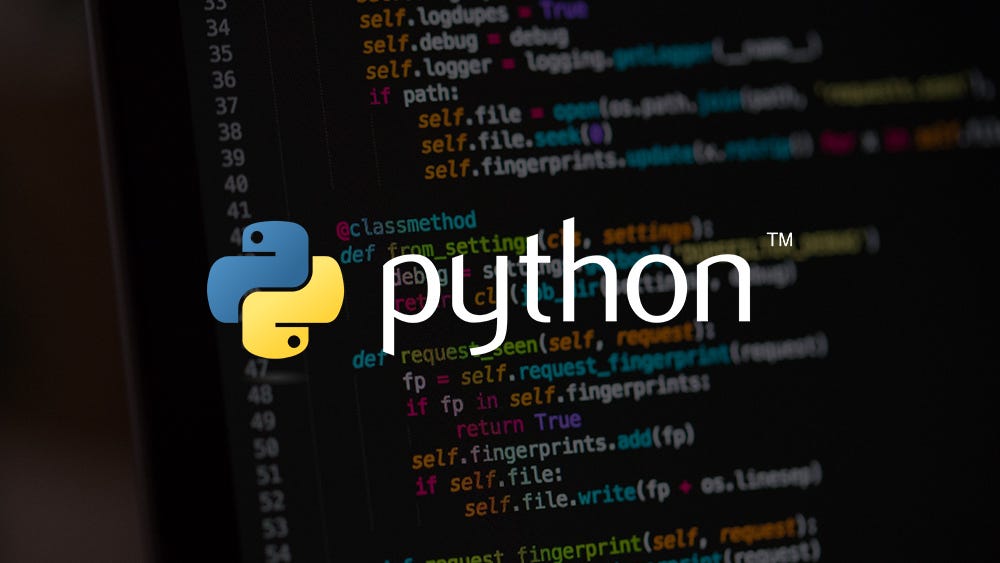What Are the Advantages of Using Python?
 shakyapreeti
shakyapreeti
Python, a high-level, interpreted programming language, has become a dominant force in the world of software development. Its simplicity and versatility have made it a favorite among both novice programmers and seasoned developers. This article delves into the numerous advantages of using Python, exploring why it has garnered such widespread adoption and how it can benefit various types of projects and industries.
- Easy to Learn and Use One of Python’s most significant advantages is its simplicity. The language’s syntax is clear and readable, making it an excellent choice for beginners. Unlike other programming languages that have complex syntax rules, Python emphasizes readability and simplicity. This ease of learning reduces the initial barrier to entry for new programmers and allows them to start writing meaningful code quickly.
Python’s design philosophy, which includes the principle that “There should be one—and preferably only one—obvious way to do it,” encourages the writing of clear and consistent code. This characteristic not only helps beginners but also improves collaboration among developers, as the code is easier to understand and maintain.
- Versatility and Flexibility Python is incredibly versatile and can be used for a wide range of applications, from web development and data analysis to artificial intelligence and scientific computing. Its extensive standard library and the vast ecosystem of third-party packages (available through the Python Package Index, or PyPI) provide tools and frameworks for almost any task.
For web development, frameworks like Django and Flask enable developers to build robust and scalable web applications. In data science, libraries such as Pandas, NumPy, and Matplotlib provide powerful tools for data manipulation, analysis, and visualization. For machine learning and artificial intelligence, libraries like TensorFlow and PyTorch are widely used for developing sophisticated models.
- Strong Community Support Python boasts a large and active community of developers, which is a significant advantage. This community support translates into extensive documentation, tutorials, and a wealth of resources for learning and problem-solving. Whether you are stuck on a coding problem or looking for the best practices for a particular task, chances are you can find help from the Python community.
Furthermore, the open-source nature of Python means that many developers contribute to its development, continuously improving the language and its libraries. This collaborative environment ensures that Python remains up-to-date with the latest advancements in technology.
- Extensive Libraries and Frameworks The availability of libraries and frameworks is one of Python’s strongest points. These tools extend Python’s capabilities and allow developers to avoid reinventing the wheel. Here are some notable libraries and frameworks:
Django and Flask: For web development, these frameworks simplify the process of building web applications. Pandas, NumPy, and SciPy: Essential for data manipulation and scientific computing. Matplotlib and Seaborn: Used for data visualization, making it easier to create graphs and plots. TensorFlow, Keras, and PyTorch: Popular libraries for machine learning and deep learning. Beautiful Soup and Scrapy: For web scraping and extracting data from web pages. These libraries save time and effort, enabling developers to focus on solving the core problems of their applications.
Cross-Platform Compatibility Python is cross-platform, meaning it runs on various operating systems such as Windows, macOS, and Linux. This compatibility ensures that Python applications can be developed and deployed across different environments without significant changes to the codebase. This feature is particularly beneficial for organizations that operate in heterogeneous computing environments.
Strong Integration Capabilities Python can easily integrate with other languages and technologies. It can be embedded within C/C++ programs or extended using C/C++. Python also interfaces well with Java, .NET, and other languages through various binding tools and frameworks. This interoperability makes Python a versatile choice for projects that require multiple technologies or legacy systems integration.
Productivity and Speed Python’s high-level nature allows developers to write less code to accomplish more. Its dynamic typing and automatic memory management simplify development tasks and boost productivity. Additionally, Python’s interpreted nature means that developers can test and debug code quickly, leading to shorter development cycles.
While Python is not the fastest language in terms of execution speed, its productivity benefits often outweigh this drawback. For many applications, the speed of development and ease of maintenance are more critical than raw performance.
- Adoption in Industry and Academia Python’s popularity is not limited to a particular domain; it is widely adopted in both industry and academia. In the industry, companies like Google, Facebook, and Instagram use Python for various applications, from web services to data analysis and machine learning. Its use in academia is equally widespread, with many universities adopting Python as the primary language for teaching programming and data science courses.
This widespread adoption ensures that Python skills remain in high demand, making it a valuable language for career development.
- Excellent Tools and IDEs Python developers have access to a range of powerful tools and integrated development environments (IDEs) that enhance the coding experience. Some of the most popular Python IDEs include:
PyCharm: A full-featured IDE specifically for Python, offering code analysis, a graphical debugger, and integration with version control systems. Jupyter Notebook: An interactive environment that is particularly popular in data science for combining code execution with rich text and visualizations. Visual Studio Code: A lightweight, versatile code editor with excellent support for Python through extensions. These tools provide features such as code completion, debugging, and testing, which streamline the development process.
- Active Development and Evolution Python is continuously evolving, with a dedicated core development team and an active community contributing to its improvement. New features, performance enhancements, and security updates are regularly released, ensuring that Python remains a modern and robust language.
The introduction of Python 3 addressed many of the limitations and inconsistencies of Python 2, and the language has continued to evolve with features like type hinting and async capabilities, making it suitable for contemporary software development needs.
Conclusion
Python’s advantages are numerous and compelling, making it a powerful choice for a wide range of programming tasks. Its simplicity and readability lower the entry barrier for new programmers, while its versatility and extensive library support make it a favorite among experienced developers. With strong community support, cross-platform compatibility, and robust integration capabilities, Python stands out as a leading programming language in both industry and academia.
Whether you are building web applications, analyzing data, developing machine learning models, or scripting tasks, Python offers the tools and flexibility to get the job done efficiently. Its ongoing development and widespread adoption ensure that Python will continue to be a valuable skill for developers for years to come. If you are looking to enhance your skills, consider enrolling in a Python course in Agra, Dehradun, Mumbai, Delhi, Noida and all cities in India to take advantage of this powerful language and its many benefits.
Subscribe to my newsletter
Read articles from shakyapreeti directly inside your inbox. Subscribe to the newsletter, and don't miss out.
Written by

shakyapreeti
shakyapreeti
ABOUT I am Preeti, working as a Digital Marketer and Content Marketing.